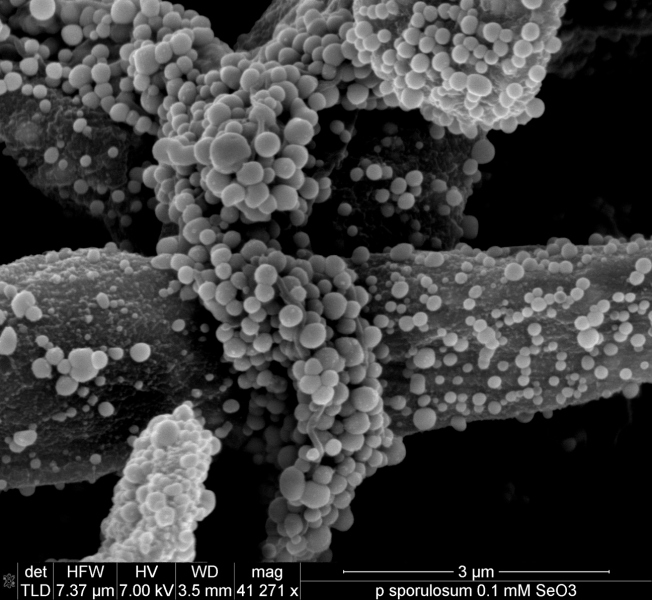Metal(loid) biogeochemistry
Microorganisms contribute greatly to the biogeochemical cycling of metals and metalloids on Earth through transformational processes such as redox, complexation, and adsorptions. These transformations contribute substantially to the availability of these nutrients and/or pollutants to organisms. We take a laboratory- and field-based approach to examine biotic and abiotic transformation mechanisms, microbial communities and activities, biomineral formation, and resulting geochemistry that contributes to the overall health of natural and heavily polluted environments. Current projects in the lab include fungi-induced selenium transformations, microbial manganese oxidation and biomineralization, and iron-sulfur-carbon cycling in riparian wetlands.
Recent Projects:
-
Simultaneous transformation of manganese and selenium by fungi
-
Unraveling the genetic mechanisms behind fungal SeLenium TRANSFORMATIONs using transcriptomics and geochemical approaches
-
Assessing the impact of organic carbon source and concentration on fungal selenium transformations
First We Should Consider Manoomin
KAWE GIDAA-NAANAAGADAWENDAAMIN MANOOMIN “first we should consider manoomin / psiη (wild rice)”
The Santelli lab is part of a highly interdisciplinary collaboration between Great Lakes Tribal communities and University of Minnesota researchers that prioritizes Tribal views in order to identify and tackle the threats faced by manoomin/psiη (wild rice) and its habitat and to further protect Indigenous resource sovereignty. This project integrates the cultural significance, ecology, and policy of manoomin.
This project is funded by UMN Grand Challenges and the Institute on the Environment.
Learn more at the manoomin project website, Facebook page, or from this brief summary.
Bioremediation
Microorganisms play an integral role in transforming pollutants in the environment. These processes can be harnessed for cleaning up heavily impacted environments through passive techniques or advanced technologies. The Santelli lab conducts research on bioremediation of manganese in coal mine drainage as well as selenium bioremediation from industrial waste streams and mining processes.
